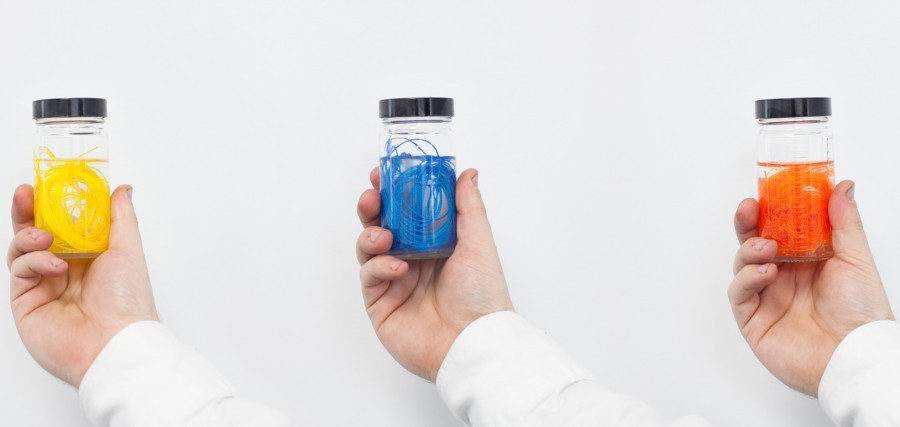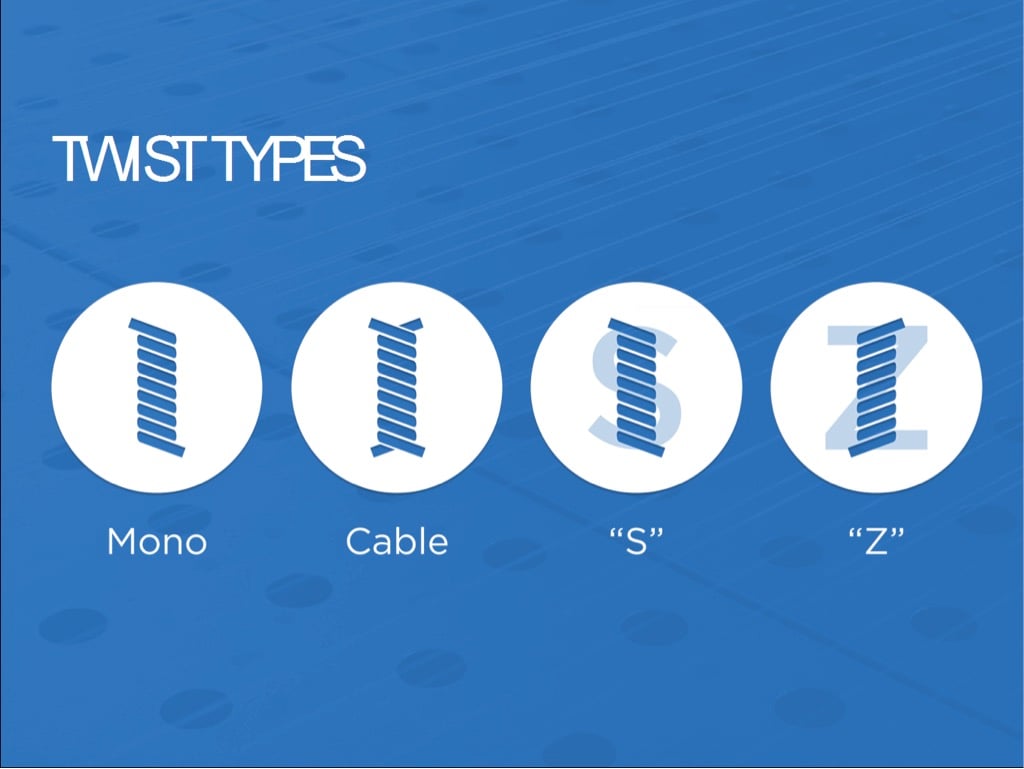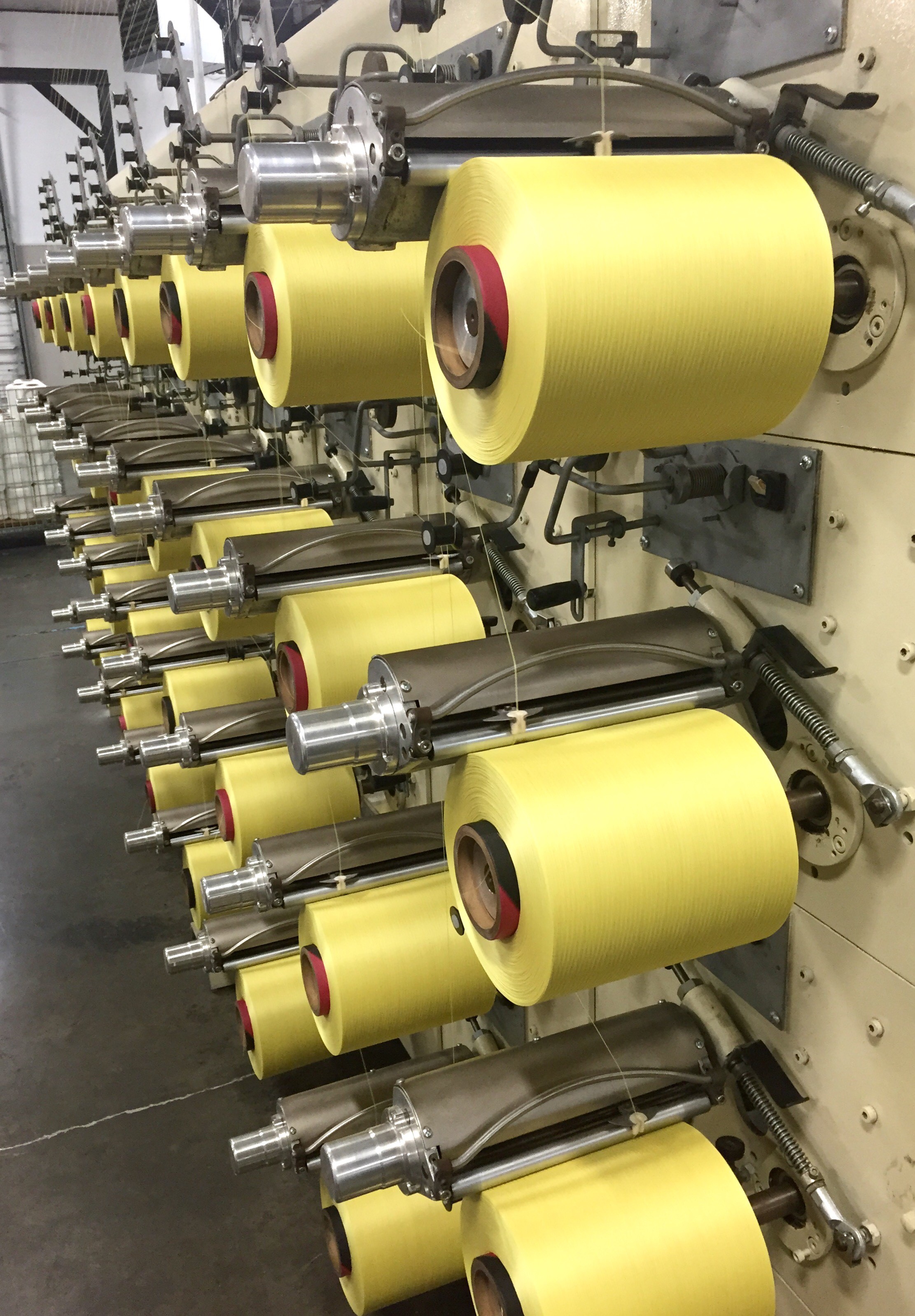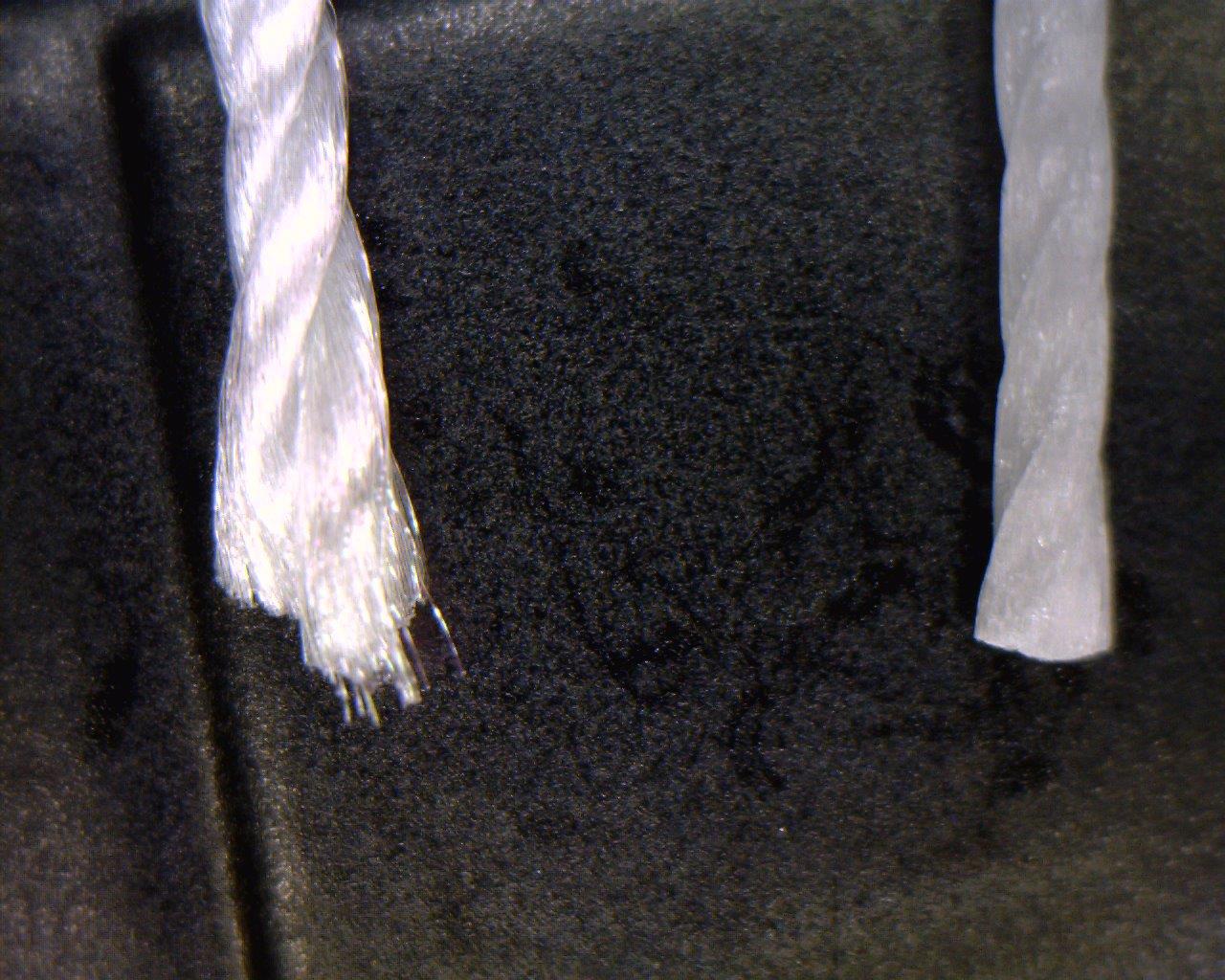Aramid fiber is best known by the trademark name DuPont™ Kevlar® and offers many unique and beneficial properties. With aramid raw material costs between five and thirty times the cost of nylon or polyester, many manufacturers look for ways to save when aramids are required for their application. What seems on the surface like an easy question is a lot more complicated than you might think. So, what are some of the factors that contribute to the total cost of industrial aramid yarn or thread?
Read more- By Steve Zande
- 10/30/15
- 3 Comments
Choosing the correct twist for the industrial sewing thread used in your application is an important consideration in how smoothly your manufacturing process works. That is why it's important to know the difference between left twist and right twist industrial sewing threads.
Read more- By Dane Hatcher
- 08/28/15
- 9 Comments
Are skipped stitches causing you down time in your industrial sewing application? Here are some tips to help find and correct the common causes of skipped stitches.
- Check and make sure that machine is threaded correctly
- Make sure machine is oiled properly and general maintenance has been done
- Change the needle and make sure it is pushed all the way into the needle bar with the kerf/eye parallel to the hand wheel or slightly pointed towards incoming shuttle hook
- Check timing of needle in relation to hook. Make sure the needle is rising back up when checking the timing. When the tip of the hook is beside the needle, the eye of the needle should be ~ 1/16” below the hook. The tip of the hook should also be very close to the needle, about the thickness of printer paper from the needle:
- By Jay Todd
- 08/21/15
- 0 Comments
The Industrial Fabrics Association International (IFAI) is a trade assocation of member companies in specialty fabrics and advanced textiles with 1,491 members from 42 countries. Each year in October IFAI hosts the IFAI Expo, providing industrial textile companies and professionals with the opportunity to:
Read more- By Steve Zande
- 07/31/15
- 1 Comment
Dupont™ Kevlar®and other aramid yarns and threads are used in many industries including:
- high temperature fluid hose manufacturing as reinforcement
- electrical wire and cable for binding, ripcords, strength members and shielding (braided)
- composite materials- aramid fabric is used for strength and reinforcement
- ballistics, to sew proctective garmets, body armour and bullet proof vests
- rope manufacturing for added strength
- synthetic web-slings for sewing and round sling filler yarn
- mattress manufacturing for sewing tape edge seams
Most of the products made with Kevlar® and other aramid yarns require high strength and/or fire retardant characteristics. The unique nature and production processes to make aramid fibers are some reasons aramids are much more expensive than other commodity fibers like cotton, polyester and nylon. Common characteristics among Kevlar® and other Aramid fibers include:
Read more- By Dane Hatcher
- 07/24/15
- 2 Comments
Heavy duty industrial sewing machines like the Service Class 7, Singer 7 Series, and Consew 733 can be used in manufacturing operations for years provided some simple preventative maintenance steps are followed on a daily, weekly, and monthly schedule. Here's what we recommend:
Read more- By Steve Zande
- 07/17/15
- 0 Comments
Multifilament nylons, polyesters and aramid yarns go through a series of twisting and winding steps during the sewing thread manufacturing process. The twisting process is generally required to convert any yarn into a thread that can be used for sewing, but bonding, an additional process step, may not be needed depending on the size, use and industrial application.
Read more
- By Jay Todd
- 09/09/14
- 2 Comments
Singer Class 7 and other Class 7 sewing machines will run reliably for years if setup properly, oiled daily, and serviced regularly. These lock stitch machines were originally designed in the early 1900’s to use a bottom thread wound onto a flanged metal bobbin. This under bobbin thread, if not properly wound, will:
Read moreOne of the best upgrades for your Class 7 industrial sewing machine is switching from the metal operator wound under bobbins used in the early 1900s to the pre-wound Style 41 bobbins
Read more- By Jay Todd
- 05/06/14
- 2 Comments

We get questions every week from manufacturers who want to use one or more ends of a colored yarn or thread for product identification (marker threads) and for production marketing and differentiation. An understanding of the types of dyed yarns available, and the advantages and disadvantages of each is crucial to product performance and design.
Read moreAramid fiber is best known by the trademark name DuPont™ Kevlar® and offers many unique and beneficial properties. With aramid raw material costs between five and thirty times the cost of nylon or polyester, many manufacturers look for ways to save when aramids are required for their application. What seems on the surface like an easy question is a lot more complicated than you might think. So, what are some of the factors that contribute to the total cost of industrial aramid yarn or thread?
Read moreOlder Posts
Choosing the correct twist for the industrial sewing thread used in your application is an important consideration in how smoothly your manufacturing process works. That is why it's important to know the difference between left twist and right twist industrial sewing threads.
Read moreIndustrial Sewing Troubleshooting Tips - Fixes for Skipped Stitches
- By Dane Hatcher
- 08/28/15
- 9 Comments
Are skipped stitches causing you down time in your industrial sewing application? Here are some tips to help find and correct the common causes of skipped stitches.
- Check and make sure that machine is threaded correctly
- Make sure machine is oiled properly and general maintenance has been done
- Change the needle and make sure it is pushed all the way into the needle bar with the kerf/eye parallel to the hand wheel or slightly pointed towards incoming shuttle hook
- Check timing of needle in relation to hook. Make sure the needle is rising back up when checking the timing. When the tip of the hook is beside the needle, the eye of the needle should be ~ 1/16” below the hook. The tip of the hook should also be very close to the needle, about the thickness of printer paper from the needle:
IFAI Expo 2015 Anaheim, California
- By Jay Todd
- 08/21/15
- 0 Comments
The Industrial Fabrics Association International (IFAI) is a trade assocation of member companies in specialty fabrics and advanced textiles with 1,491 members from 42 countries. Each year in October IFAI hosts the IFAI Expo, providing industrial textile companies and professionals with the opportunity to:
Read moreDupont™ Kevlar®and other aramid yarns and threads are used in many industries including:
- high temperature fluid hose manufacturing as reinforcement
- electrical wire and cable for binding, ripcords, strength members and shielding (braided)
- composite materials- aramid fabric is used for strength and reinforcement
- ballistics, to sew proctective garmets, body armour and bullet proof vests
- rope manufacturing for added strength
- synthetic web-slings for sewing and round sling filler yarn
- mattress manufacturing for sewing tape edge seams
Most of the products made with Kevlar® and other aramid yarns require high strength and/or fire retardant characteristics. The unique nature and production processes to make aramid fibers are some reasons aramids are much more expensive than other commodity fibers like cotton, polyester and nylon. Common characteristics among Kevlar® and other Aramid fibers include:
Read moreHeavy duty industrial sewing machines like the Service Class 7, Singer 7 Series, and Consew 733 can be used in manufacturing operations for years provided some simple preventative maintenance steps are followed on a daily, weekly, and monthly schedule. Here's what we recommend:
Read moreMultifilament nylons, polyesters and aramid yarns go through a series of twisting and winding steps during the sewing thread manufacturing process. The twisting process is generally required to convert any yarn into a thread that can be used for sewing, but bonding, an additional process step, may not be needed depending on the size, use and industrial application.
Read more
How to Improve Sewing for Singer 7 & Consew Heavy Duty Sewing Machines
- By Jay Todd
- 09/09/14
- 2 Comments
Singer Class 7 and other Class 7 sewing machines will run reliably for years if setup properly, oiled daily, and serviced regularly. These lock stitch machines were originally designed in the early 1900’s to use a bottom thread wound onto a flanged metal bobbin. This under bobbin thread, if not properly wound, will:
Read moreOne of the best upgrades for your Class 7 industrial sewing machine is switching from the metal operator wound under bobbins used in the early 1900s to the pre-wound Style 41 bobbins
Read more
We get questions every week from manufacturers who want to use one or more ends of a colored yarn or thread for product identification (marker threads) and for production marketing and differentiation. An understanding of the types of dyed yarns available, and the advantages and disadvantages of each is crucial to product performance and design.
Read more









